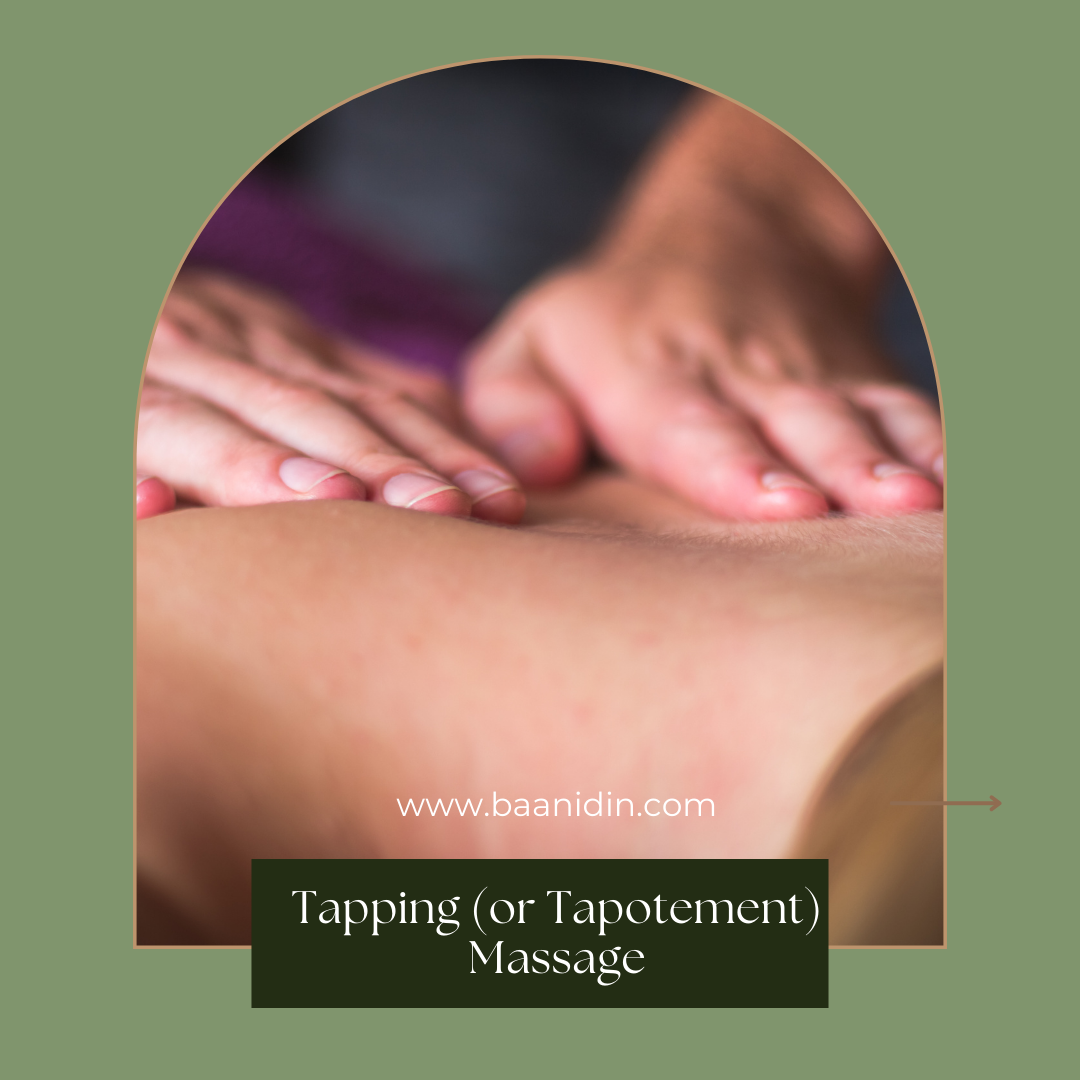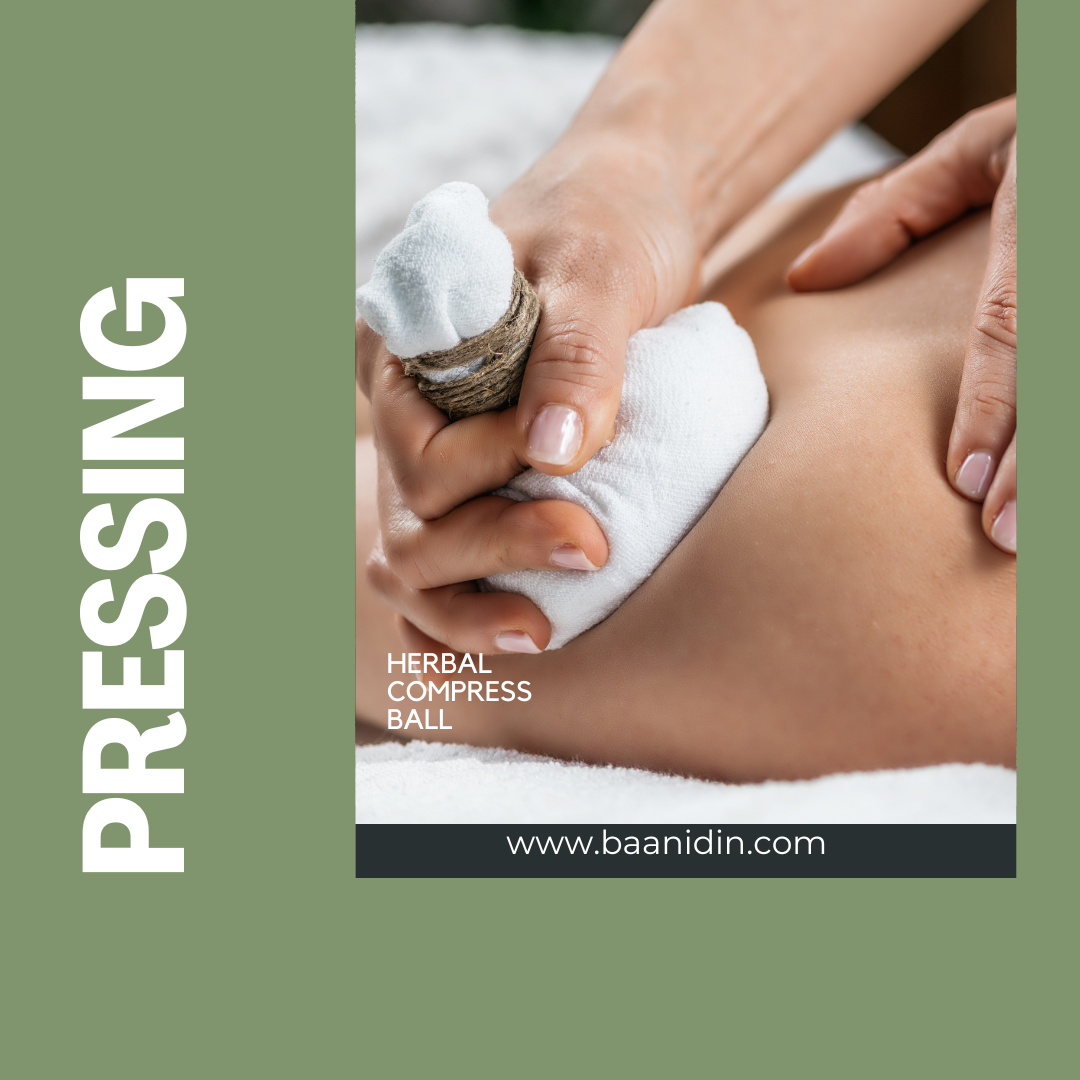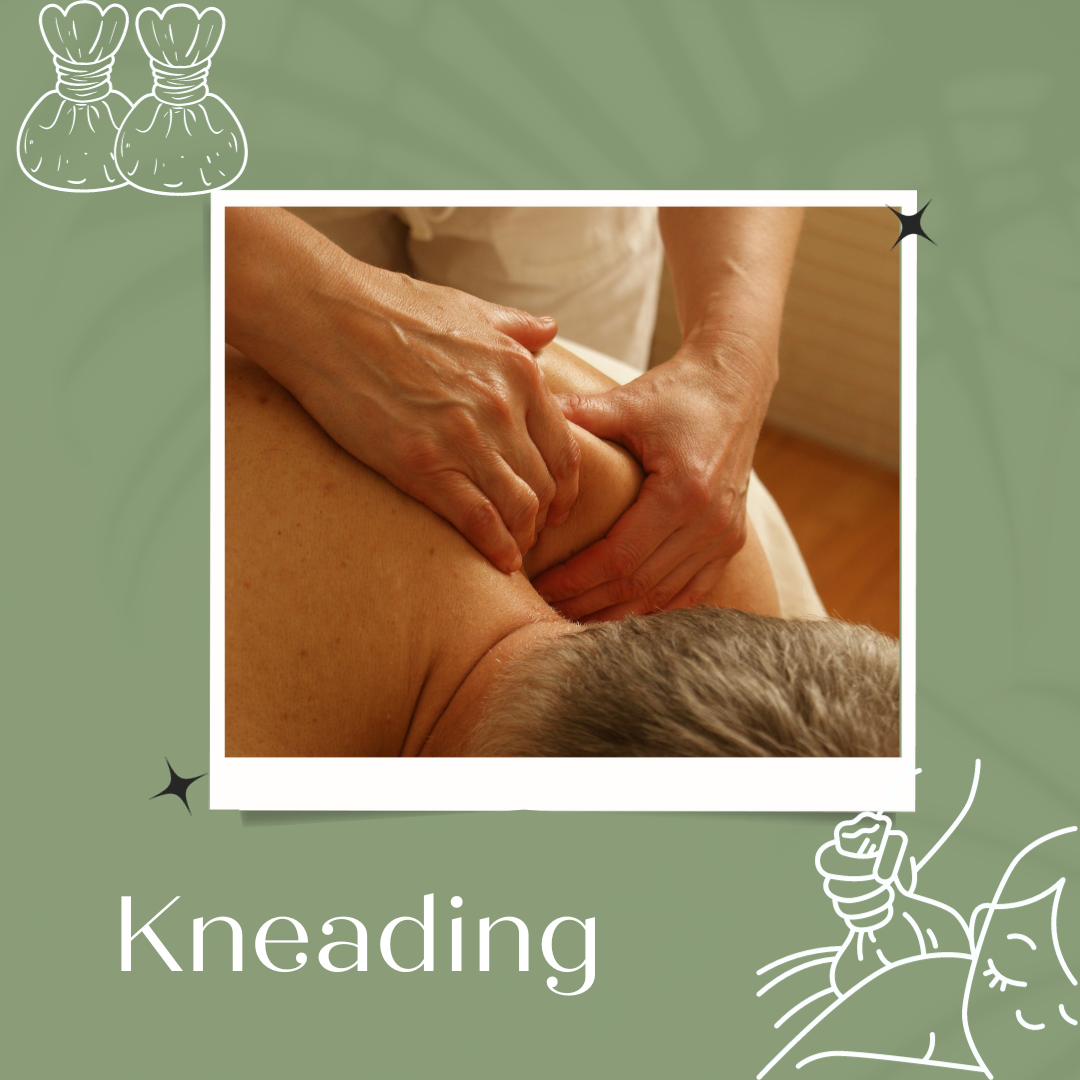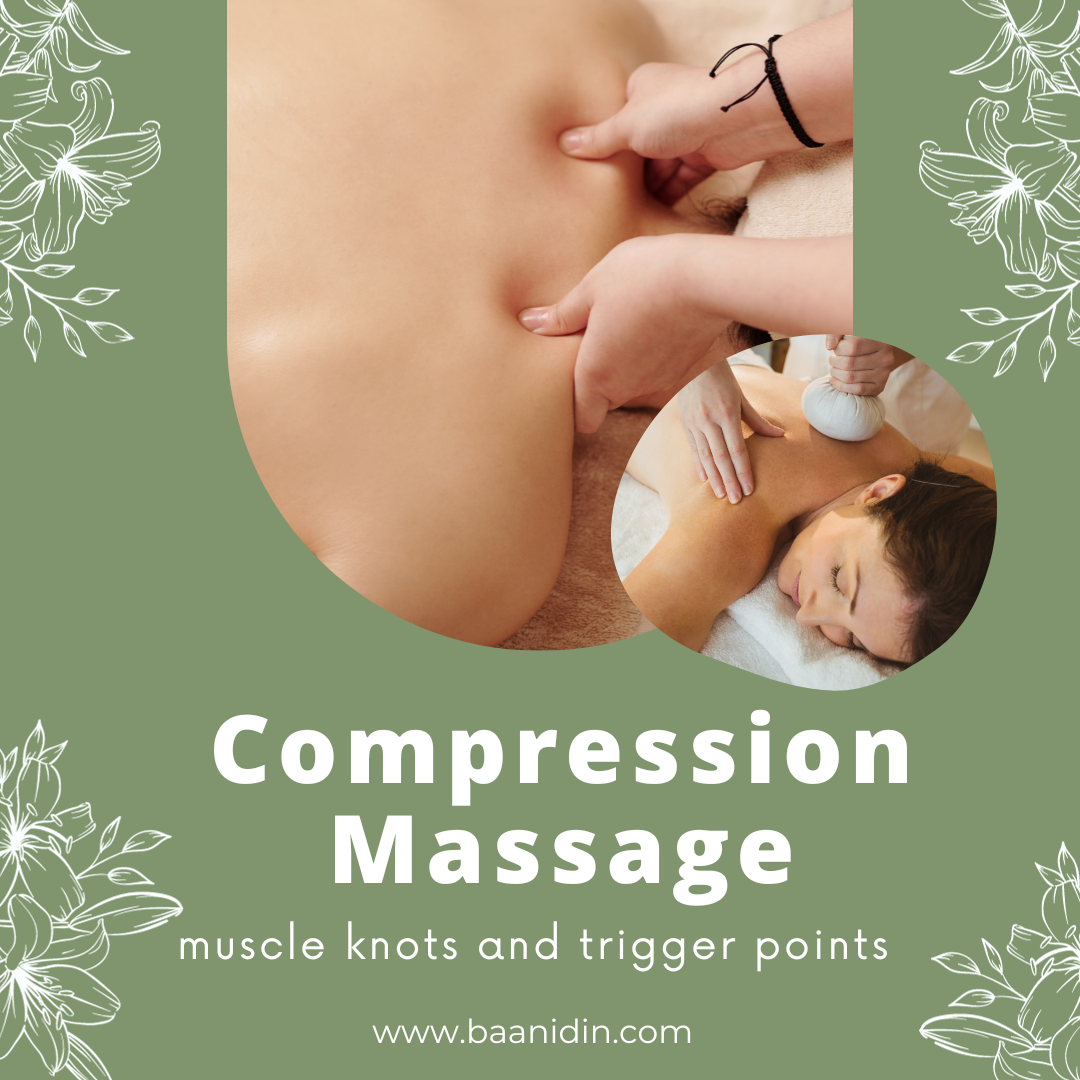Active techniques used with herbal compres
1774 Views |

Herbal compresses are often used in combination with various active techniques to enhance their therapeutic effects. These techniques involve the skilled manipulation of the compress and the body part being treated.
Some active techniques commonly used in conjunction with herbal compresses

Tapping (or Tapotement): Tapping involves rhythmic and gentle tapping with the herbal compress on the body's surface. It can help stimulate circulation, relax tense muscles, and invigorate the body.
Stimulate Circulation: The rhythmic tapping action helps increase blood flow to the area being treated. This enhanced circulation can promote the delivery of oxygen and nutrients to the muscles and tissues, aiding in the healing and rejuvenation process.
Relax Tense Muscles: The tapping motion can gently loosen and relax tense or contracted muscles. It can be especially effective in reducing muscle stiffness and promoting muscle relaxation.
Invigorate the Body: Tapping with an herbal compress can provide an invigorating and energizing sensation. The combination of the herbal aromas and warmth with the tapping can help revitalize the body and mind.
Release Muscle Knots: Tapping can be used to target specific muscle knots or trigger points. The repeated tapping motion can help release these knots, reducing pain and discomfort.
Lymphatic Drainage: Tapping can encourage lymphatic drainage, which assists in the removal of toxins and waste products from the body. This can contribute to detoxification and overall well-being.
Sensory Stimulation: The tactile and sensory experience of tapping with an herbal compress can be pleasurable and calming, making it a valuable addition to the overall massage experience.

Pressing: Herbal compresses are pressed gently against the body to release the herbal essences and heat. This technique can help in the absorption of the herbal properties and relax the muscles.
Pressing is a massage technique commonly used with herbal compresses to release the herbal essences and heat contained within the compress. This technique involves gently applying the herbal compress to the body's surface, which has several therapeutic benefits:
Release of Herbal Properties: The pressing action allows the herbal compress to release its aromatic and therapeutic properties. The heat from the compress helps activate the herbs, and the pressure applied during pressing allows these properties to be absorbed through the skin. This can contribute to the relaxation and healing effects of the herbal compress massage.
Heat Application: The gentle pressure from the herbal compress, combined with the heat it generates, can help relax and loosen tense muscles. This is particularly beneficial for individuals with muscle stiffness or discomfort.
Muscle Relaxation: The application of heat through pressing can promote muscle relaxation and reduce muscle tension. It's especially useful for people experiencing muscle aches or soreness.
Stress Reduction: The comforting warmth of the herbal compress can have a soothing and stress-reducing effect. This makes the pressing technique ideal for promoting overall relaxation and well-being.
Improved Blood Flow: The heat generated during pressing can help dilate blood vessels, improving blood circulation in the treated area. Enhanced blood flow can contribute to better nutrient and oxygen delivery to the muscles and tissues.
Enhanced Absorption: The pressing motion can aid in the absorption of the herbal properties, allowing them to penetrate the skin and provide their therapeutic benefits more effectively.
Mobilization: The therapist may move the body part around the compress, such as rotating or flexing the joints. This technique can help improve joint flexibility and relieve tension.
Joint Flexibility: Mobilization aims to gently and passively move the joints and surrounding tissues. This can help improve joint flexibility and range of motion. It is often used to address joint stiffness or limitations in mobility.
Relief of Muscle Tension: Mobilization can help release muscle tension, especially in areas where muscles may have tightened due to immobility or overuse. The gentle movement can relax and stretch the muscles, providing relief from discomfort and stiffness.
Improved Circulation: As the joint is moved during mobilization, it can promote better circulation in the surrounding tissues. Enhanced blood flow helps deliver nutrients and oxygen to the muscles and aids in the removal of metabolic waste products.
Pain Reduction: Mobilization can be beneficial for individuals experiencing chronic pain or discomfort related to joint and muscle issues. It can help reduce pain by improving joint function and releasing muscle tension.
Enhanced Lubrication: Mobilization can stimulate the production of synovial fluid, which lubricates the joints. This can further improve joint movement and reduce friction and discomfort.
Relaxation: The gentle, passive movement involved in mobilization can induce a sense of relaxation and well-being. Clients often find it soothing and comforting.

Rolling: The herbal compress is rolled or glided across the body's surface. This technique can provide a soothing and continuous application of heat and herbal benefits. It's often used in Thai herbal ball massages.
Continuous Heat Application: Rolling the herbal compress along the body provides a constant source of heat. This helps relax the muscles, soothe tension, and enhance the overall massage experience.
Herbal Aromatherapy: As the herbal compress is rolled, it releases its aromatic herbal properties. The client can benefit from the pleasing scents and therapeutic properties of the herbs.
Muscle Relaxation: The heat generated by the herbal compress, combined with the rolling motion, can effectively relax tense muscles and reduce muscle stiffness. This makes it an excellent technique for people with muscle discomfort.
Improved Circulation: The rolling action can stimulate blood flow in the treated areas, improving circulation and nutrient delivery to the muscles and tissues.
Stress Reduction: The continuous and gentle motion of the herbal compress can promote relaxation and a sense of comfort. This makes rolling a popular choice for individuals seeking stress relief.
Sensory Experience: Clients often find the rolling technique enjoyable due to its tactile and sensory qualities. The combination of heat, texture, and herbal aromas can enhance the overall therapeutic experience.
Even Application: Rolling ensures an even distribution of heat and herbal properties across the body, providing consistent benefits throughout the massage.
Stretching and Rolling: This technique combines stretching movements with rolling the herbal compress along the body. It's commonly used in Thai herbal ball massages to improve flexibility and relieve muscle tension.
Improved Flexibility: Combining stretching with rolling helps to increase flexibility in the muscles and joints. The stretching component elongates the muscles and can enhance the range of motion, making it beneficial for individuals with limited flexibility or muscle tightness.
Release of Muscle Tension: Stretching and rolling help to release muscle tension effectively. The stretching movements elongate and relax the muscles, while the rolling action provides soothing heat and pressure to ease muscular tightness.
Enhanced Blood Circulation: Stretching and rolling stimulate blood flow in the treated areas, promoting better circulation. Improved circulation aids in the delivery of nutrients and oxygen to the muscles, as well as the removal of waste products.
Stress Reduction: The combined effects of stretching, rolling, and the herbal compress's warmth can induce a deep sense of relaxation. It can be especially calming and beneficial for those looking to relieve stress and unwind.
Muscle and Joint Mobilization: The stretching component in this technique helps to mobilize and loosen the joints. It can alleviate joint stiffness and increase joint mobility.
Therapeutic Herbal Benefits: The herbal compress releases its herbal properties as it is rolled along the body, allowing clients to benefit from the aromatic and therapeutic aspects of the herbs.
Muscle Lengthening: Stretching the muscles during this technique aids in lengthening and realigning them, which can be helpful for those with muscle imbalances or postural issues.
Chopping: Chopping involves light, rhythmic chopping motions with the herbal compress. This can help to stimulate circulation, relax the muscles, and provide a gentle percussive massage.
Stimulation of Circulation: The chopping motion helps to stimulate blood circulation in the treated area. This improved blood flow enhances the delivery of oxygen and nutrients to the muscles and tissues, promoting overall well-being.
Muscle Relaxation: The gentle and rhythmic chopping can effectively relax and release muscle tension. It's often used to address muscle stiffness or discomfort.
Percussive Massage: Chopping provides a percussive massage effect, which can invigorate the body. The rapid, light strikes can create a sense of vitality and energy.
Relief from Muscle Knots: Chopping can target specific muscle knots or trigger points, providing relief from localized muscle tension and discomfort.
Stress Reduction: The soothing and rhythmic nature of the chopping technique can promote relaxation and help reduce stress. Many clients find it enjoyable and comforting.
Lymphatic Drainage: Chopping can encourage lymphatic drainage, aiding in the removal of toxins and waste products from the body. This can contribute to detoxification and improved overall health.
Sensory Experience: Clients often appreciate the tactile and sensory qualities of the chopping technique. It adds to the overall therapeutic experience by engaging multiple senses.

Kneading: The therapist may use the herbal compress to knead the muscles, similar to traditional massage techniques. This can help release muscle tension and improve blood flow.
Muscle Tension Release: Kneading with the herbal compress helps release muscle tension. The compress can effectively target knots and tight spots in the muscles, promoting relaxation and relief.
Improved Blood Flow: The kneading motion stimulates blood flow in the treated area, which enhances the circulation of oxygen and nutrients to the muscles and tissues. This can lead to improved muscle health.
Muscle Mobilization: Kneading can help mobilize and relax the muscles and soft tissues. It can be particularly beneficial for individuals with muscle stiffness or discomfort.
Stress Reduction: The comforting and rhythmic kneading motion contributes to relaxation and stress reduction. Clients often find it soothing and pleasant.
Enhanced Range of Motion: Kneading can contribute to improved joint flexibility and range of motion, as it helps to loosen and relax the muscles and surrounding tissues.
Sensory Experience: Clients often appreciate the tactile and sensory qualities of the kneading technique. The combination of warmth from the herbal compress and the kneading motion enhances the overall therapeutic experience.

Compression: Steady pressure is applied using the herbal compress to specific areas of the body. This can help alleviate muscle knots and trigger points.
Focused Pressure: Compression allows the therapist to apply focused pressure to specific areas of the body where muscle knots or trigger points are present. This can help to release tension and relieve pain in these targeted areas.
Alleviation of Muscle Knots: Muscle knots, which are tight and contracted muscle fibers, can cause pain and discomfort. Compression helps to break up these knots, promoting muscle relaxation and relief.
Release of Trigger Points: Trigger points are hypersensitive areas within the muscle that can refer pain to other parts of the body. Compression is an effective method for deactivating trigger points, reducing pain, and restoring normal muscle function.
Enhanced Circulation: Applying steady pressure to a specific area can temporarily restrict blood flow. When the pressure is released, fresh blood flows into the area, which can promote healing and the removal of metabolic waste products.
Pain Reduction: Compression is a valuable technique for individuals experiencing localized pain, such as in the shoulders, neck, or back. It can provide significant pain relief by addressing the source of discomfort.
Muscle Relaxation: The gentle pressure applied during compression can effectively relax the muscles. This can be particularly beneficial for those with muscle tension and tightness.
Circling: Circular motions with the herbal compress can be used to massage and relax specific areas, such as the shoulders or back.
Localized Massage: Circling allows the therapist to focus on specific areas of the body, providing a targeted and localized massage. It's particularly useful for addressing tension and discomfort in specific muscle groups.
Muscle Relaxation: The circular motions can effectively relax and release muscle tension in the treated area. This can provide relief from muscle stiffness and discomfort.
Improved Blood Flow: The circling motion stimulates blood circulation in the targeted area, enhancing the delivery of oxygen and nutrients to the muscles and tissues.
Soothing and Comforting: The circular motion with the herbal compress is often perceived as soothing and comforting by clients. It can induce relaxation and a sense of well-being.
Stress Reduction: The tactile and rhythmic qualities of circling can contribute to stress reduction, making it a valuable technique for relaxation and stress relief.
Aromatic Benefits: As the herbal compress is used in circling, it releases its aromatic herbal properties, allowing clients to benefit from the pleasant scents and therapeutic aspects of the herbs.
Gentle Rocking: The therapist may gently rock or sway the body part while maintaining contact with the herbal compress. This rocking motion can promote relaxation and comfort.
Relaxation: Gentle rocking induces a sense of relaxation and comfort. It can help clients unwind and let go of tension, making it particularly suitable for individuals seeking a soothing massage experience.
Stress Reduction: The rhythmic and gentle rocking motion can have a calming effect, reducing stress and anxiety. It can promote a sense of peace and well-being.
Enhanced Comfort: Gentle rocking can help clients feel more comfortable during a massage. It's often used to create a nurturing and safe environment for the client.
Improved Body Awareness: The rocking motion can increase body awareness and mindfulness. Clients become more attuned to their bodies and the sensations they're experiencing.
Pain Relief: Gentle rocking can provide pain relief for individuals with muscle tension or discomfort. The motion can help relax tight muscles and relieve pain.
Enhanced Circulation: The rocking motion stimulates blood flow, contributing to improved circulation and the delivery of nutrients to the muscles and tissues.
These active techniques, when combined with the warmth and therapeutic properties of the herbal compress, can create a unique and deeply relaxing massage experience. The specific techniques used can vary depending on the type of massage, the therapist's training, and the client's preferences.









